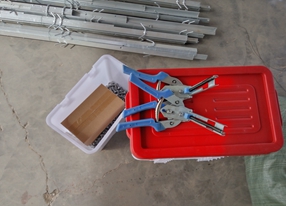chicken scalders
Dec . 27, 2024 19:52 Back to list
chicken scalders
The Importance of Chicken Scalders in Poultry Processing
In the poultry processing industry, efficiency and hygiene are paramount. One of the critical components of this sector is the chicken scalder, a specialized machine designed to aid in the processing of poultry by making the feather removal process more manageable and effective. Scalders play a significant role in post-slaughter handling, ensuring that chickens are processed swiftly and with minimal contamination.
The primary function of a chicken scalder is to heat the water to a specific temperature, usually between 140°F to 160°F (60°C to 71°C), which helps loosen the feathers from the skin of the bird. This process, known as scalding, is essential because it reduces the time and labor needed for feather removal, ultimately leading to higher productivity. When chickens are scalded appropriately, the feathers come off easily, and the overall quality of the carcass is preserved.
There are different types of scalders, including batch scalders and continuous scalders, each suited for varying scales of poultry operations. Batch scalders involve processing a set number of chickens in one go, which is ideal for smaller operations or those with less volume. Continuous scalders, on the other hand, are designed for larger processing plants with a high throughput, allowing chickens to pass through the machine continuously, ensuring a swift operation.
Another important aspect of chicken scalder design is the maintenance of hygiene. Scalding occurs after the chickens are slaughtered, making it critical to keep the equipment clean to prevent bacterial contamination. Many modern scalders come equipped with automated cleaning systems, which help maintain the required health and safety standards set by regulatory bodies. A clean scalder not only ensures the safety of the food supply but also enhances the quality of the final product.
chicken scalders

In addition to aiding in feather removal, scalders can have implications for the quality of the meat. Proper scalding temperature and duration can help in maintaining the tenderness and juiciness of the chicken, as well as ensuring that the skin remains intact. Conversely, improper scalding can lead to tough meat and damaged skin, negatively impacting the product’s marketability and consumer satisfaction.
Further advancements in technology have led to the development of more sophisticated scalder models, incorporating features such as temperature control systems, water recycling capabilities, and enhanced energy efficiency. These innovations not only improve the scaling process but also contribute to the sustainability of poultry enterprises by reducing water and energy consumption.
Moreover, the importance of chicken scalder processes is reflected in the increasing focus on animal welfare. Proper scalding practices are aligned with humane slaughter regulations, which emphasize treating animals with respect and minimizing stress during processing. By ensuring that the scalder operates optimally, processors can achieve a smoother and more humane transition from live bird to market-ready product.
In conclusion, chicken scalders are vital equipment in poultry processing, facilitating the efficient and hygienic removal of feathers while maintaining meat quality. As the industry evolves, the continuous improvement of scalder technology and practices will play an essential role in meeting consumer demands for high-quality, safe, and humanely processed poultry products. Ensuring that scalders are efficient, clean, and well-maintained is fundamental for processors aiming to uphold the standards of the poultry industry in an ever-changing market.
-
Hot Sale 24 & 18 Door Rabbit Cages - Premium Breeding Solutions
NewsJul.25,2025
-
Automatic Feeding Line System Pan Feeder Nipple Drinker - Anping County Yize Metal Products Co., Ltd.
NewsJul.21,2025
-
Automatic Feeding Line System Pan Feeder Nipple Drinker - Anping County Yize Metal Products Co., Ltd.
NewsJul.21,2025
-
Automatic Feeding Line System - Anping Yize | Precision & Nipple
NewsJul.21,2025
-
Automatic Feeding Line System - Anping Yize | Precision & Nipple
NewsJul.21,2025
-
Automatic Feeding Line System-Anping County Yize Metal Products Co., Ltd.|Efficient Feed Distribution&Customized Animal Farming Solutions
NewsJul.21,2025






